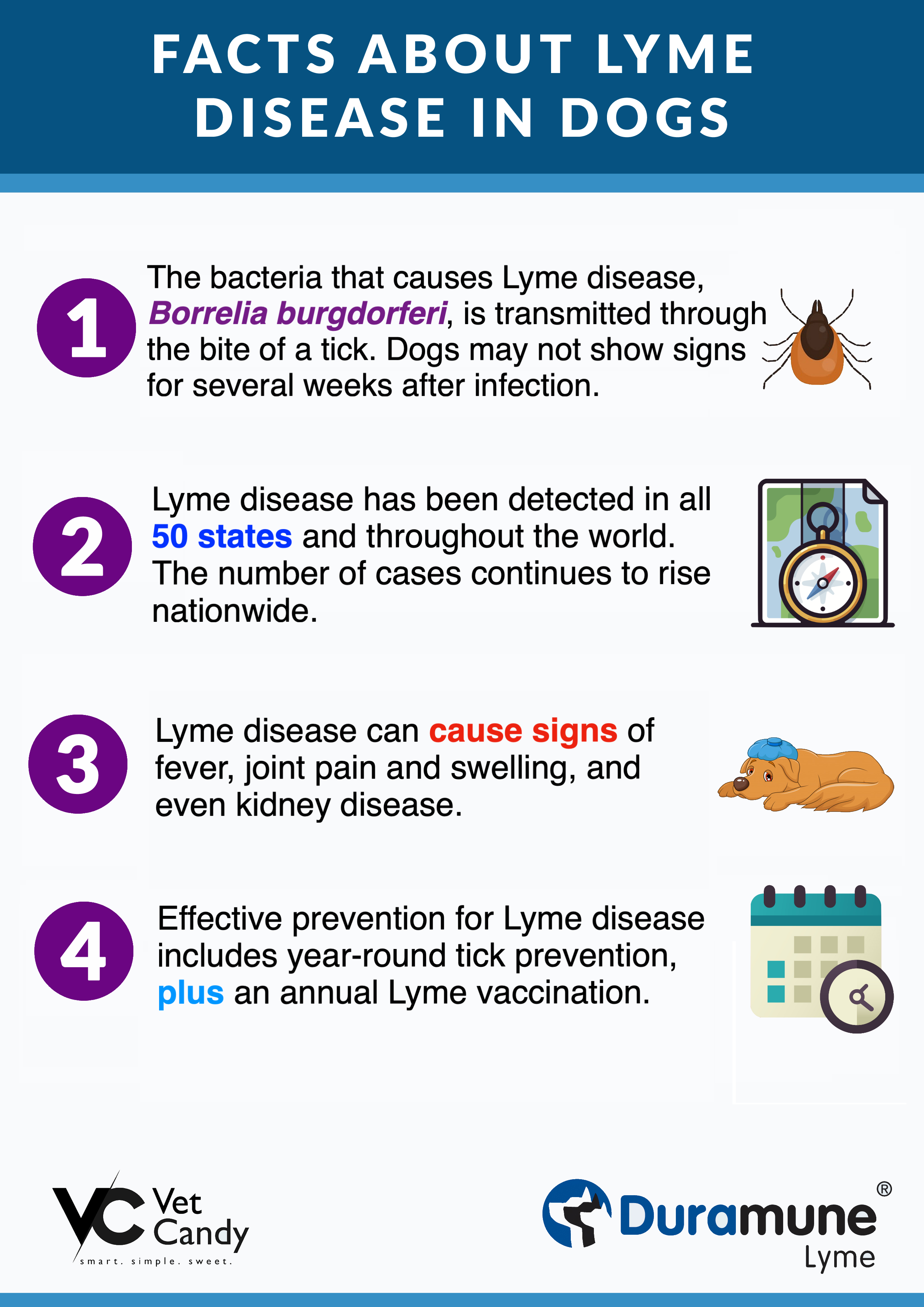Time to talk about Lyme disease
The geographic range of the blacklegged tick (Ixodes scapularis) has expanded greatly in the last decade. Lyme Disease Association reports that Lyme disease has been detected in all 50 states and the District of Columbia—and that the number of cases continues to rise nationwide. That is why more than ever, it is important to talk to your clients about how to protect their pets.
Here are a few fundamentals to cover when talking to dog owners about the prevention of Lyme disease:
1. Prevention is the Best Strategy
Canine Borrelia burgdorferi infections are common. Lyme seroprevalence rates can be as high as 13.3% for dogs in the Northeast.1 Lyme disease is also common in the upper Midwest and some West Coast states. However, only a small percentage of exposed dogs show signs of clinical disease. Despite this, following basic prevention strategies is always recommended.1 Lyme disease can be difficult and costly to diagnose, and the infection cannot always be cleared with antibiotic treatment. Further complications such as Lyme arthritis or Lyme nephritis can also impact the infected dog’s quality of life, prognosis, and the expense of managing the disease.
2. Vaccination Options
Annual vaccinations to prevent Lyme disease are a great option for dogs that are at risk for disease. For vaccination discussions you must be able to have conversations with the owner about the prevalence of the disease in your community. A great tool for this is the Companion Animal Parasite Council’s online Parasite Prevalence Maps, which includes data for Lyme disease at the county-level.3
In endemic areas with a very high risk of exposure, vaccination may be recommended in addition to careful tick control measures. Vaccination serves as an added protective measure when tick control is not perfect; for example, a lapse in prescription compliance may occur or long, dark fur may obscure the visibility of attached ticks and tick removal fails.
Discussing these various risks, scenarios, and options with the owner will foster shared decision making in the veterinarian-client-patient relationship and ultimately result in the best case-by-case solution for each patient.
3. Tick Control
Tick control is a critical recommendation for reducing Lyme disease and many other tick-borne diseases.1 Owners should be informed that transmission of the bacteria that causes the disease happens at least 24-48 hours after the tick attaches to its host.1 However, it is important to keep in mind that some other tick-borne diseases can be transmitted more quickly than this.1 For this reason, prompt tick removal and daily tick checks are important for preventing the disease. Thorough tick checks should be performed after being in any tick-prone area (i.e. travelling to endemic areas, hiking in heavy vegetation, or camping). Maintaining a clean yard that is free of heavy vegetation and debris is also a way to reduce tick populations at home.
RELATED Tick surveillance in the U.S.
You should discuss with the owner the options of topicals, tick collars, and chewables for tick prevention.1 Products that prevent tick attachment are helpful, but rapid-kill products are also likely to kill the tick before transmission can occur. Emphasize to owners that it is recommended these medications be used year-round for the best protection.1
References:
1. Littman MP, et al. ACVIM consensus update on Lyme borreliosis in dogs and cats. J Vet Intern Med 2018. https://www.ncbi.nlm.nih.gov/pmc/articles/PMC5980284/
2. Lyme Disease. Companion Animal Parasite Council. 2019. https://capcvet.org/guidelines/lyme-disease/
3. Parasite Prevalence Maps. Companion Animal Parasite Council. 2020. https://capcvet.org/maps/#2020/all/feline-heartworm-ab/cat/united-states/


